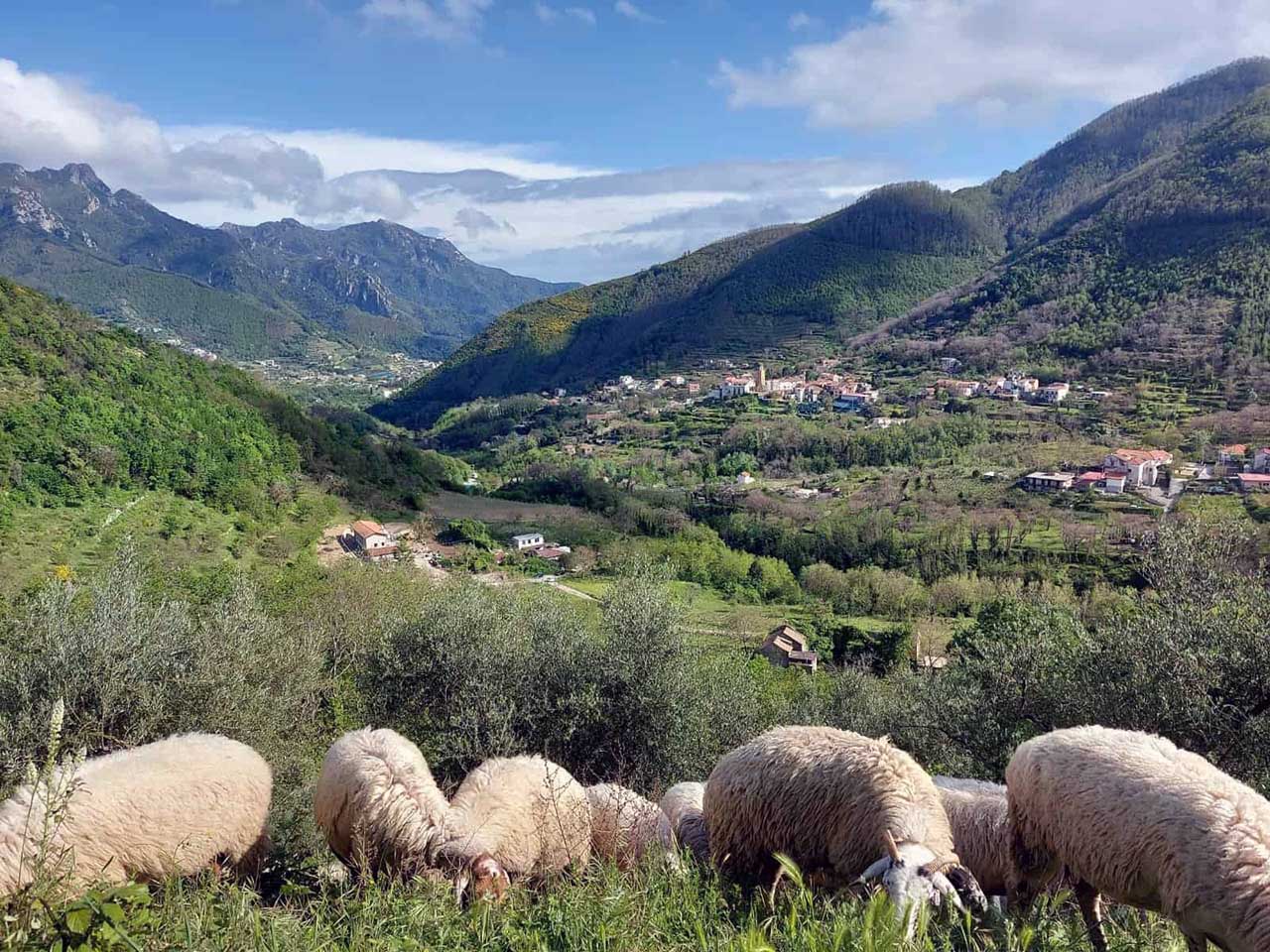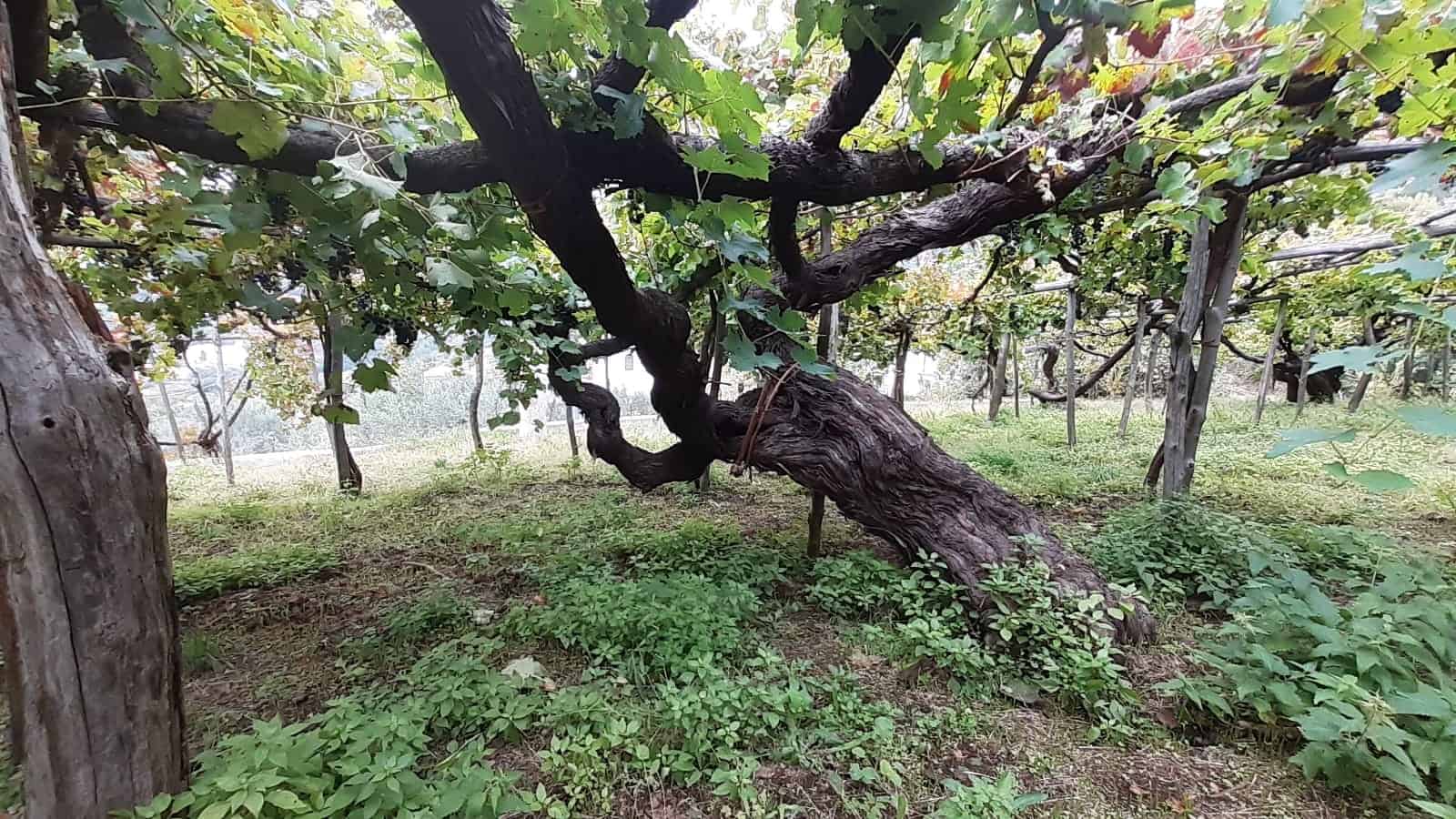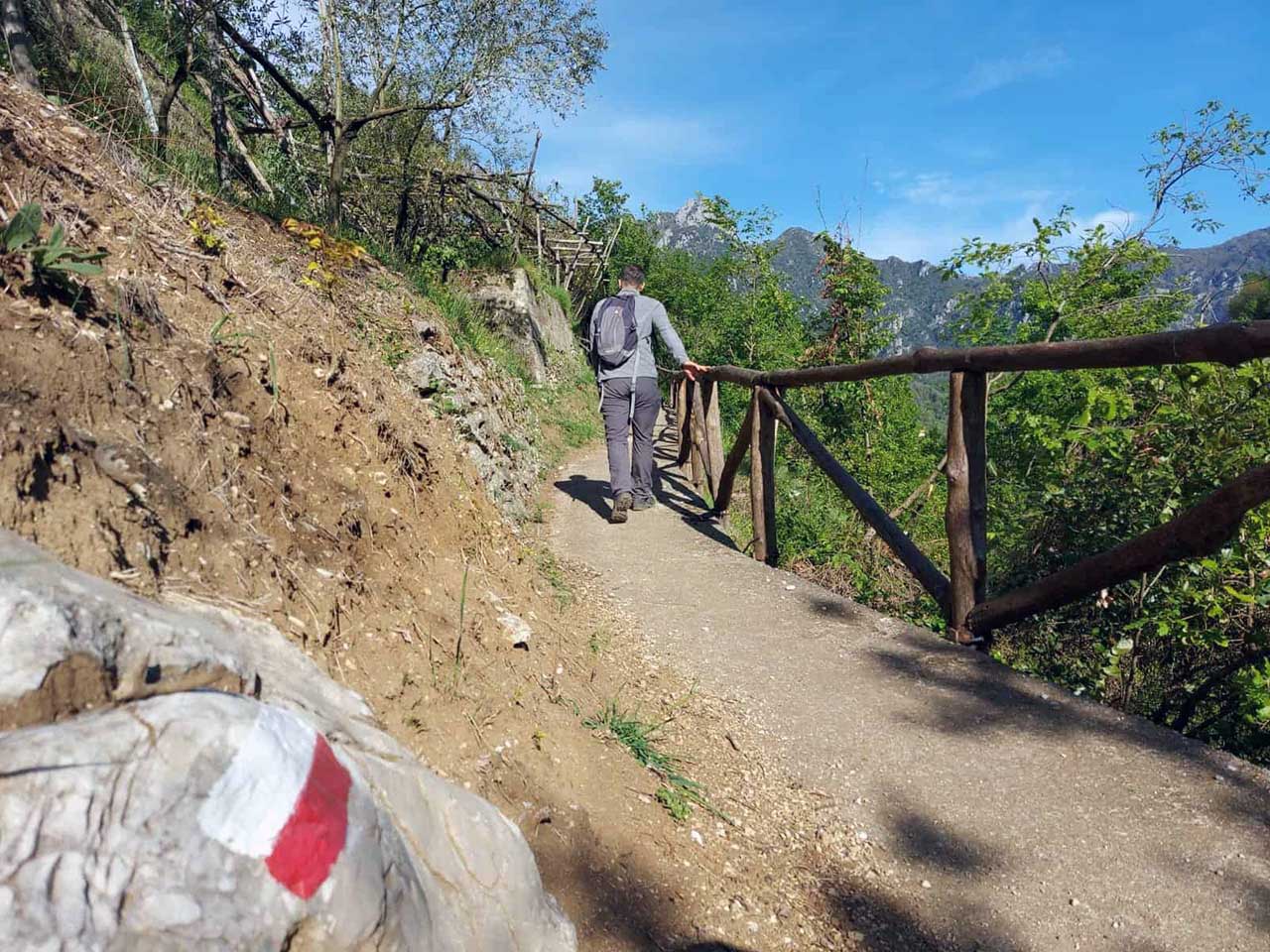From Pucara, you cross the whole territory to touch the vastness and biodiversity of the agricultural and environmental heritage of the area.
February 18th, 2022. By Anna Volpicelli
It winds among the thirteen villages of Tramonti, passing through mule tracks and historical connection roads that were used, in the past, to reach the different hamlets on foot or to move along the Amalfi Coast.
The path of the 13 churches, probably one of the most beaten itineraries of the territory, is a semi-urban route that opens to various landscapes ranging from the discovery of the villages to the biodiversity of the environmental heritage typical of the area.
The departure and the valorization plan
It starts from Pucara, the church of Sant’Erasmo, dating back to 1552. You get there along a long staircase that leads inside the village and leads to the heart of the cultivation of lemons. “The path climbs from the bottom to the top and lasts about 15 km in total, but currently, we are working on the revalorization of some parts of the trail that allow us to shorten it by a couple of kilometers, “says Matteo Giordano, founding member of the association Tramonti Amalfi Coast Trekking.
An itinerary, sometimes challenging, passes through large expanses of lemon groves, vineyards, chestnut, and olive groves—a journey into the agriculture of the Amalfi Coast. “The lower part of this circular route runs along the Reggina Minor river, starting in Tramonti. This whole area is characterized by terracing of lemons because such crops need much water,” Giordano continues.

The division into two trails
From Pucara, we reach Ferriera, where we come across the ancient paper mill until we reach Paterno Sant’Elia, with the homonymous church dating back to 1500. The route leads to Paterno Sant’Arcangelo, where the Church of the Ascension is located, one of the oldest sacred places in the area, founded in the 10th century. “From the Church of the Ascension, you can take a detour that divides the entire trail into two shorter circuits, one of which leads directly to Gete,” Giordano explains.
The direction for those who intend to continue on the main itinerary is toward Figlino. You will meet the Church of San Pietro, which houses inside the floor made in 1700 with Capodimonte majolica. A stop before starting again and arriving at the Colle di Santa Maria, the path’s highest point, offers a panoramic view of the entire valley. Right here, where today there is the city cemetery, once there was the Castle of Santa Maria La Nova, which in 1400 was built to defend the territory of Tramonti.
It is worth stopping for a few minutes to admire the landscape. Before going down towards Corsaro, it is possible to observe the peaks that draw the Park of Monti Lattari, including Cerreto, Finestra, Molosso, and Avvocata. While wandering around Corsaro, you can visit Isidoro Caso, musician (member of the folk singing group La Paranza do Tramuntan) and farmer of the village, who, between a glass of wine, a taste of cold cuts and a mini-concert with tammuriate and tarantelle, illustrates the preparation of bread and black pizza of Tramonti.
The secret garden
In a few kilometers, the scenery changes. You leave behind the scent of lemons and enter the cultivation of vines. You arrive in Campinola, in the Church of San Giovanni Battista. Besides the sacred beauties, the village is known for its Secret Garden of the Soul.
Hidden, this green area was born on an ancient abandoned vineyard and collected on an expanse of about 3 thousand meters, a citrus grove with 25 varieties, a rose garden with 300 different species, and aromatic and medicinal plants. An experimental botanical garden is an ideal place to relax and breathe.

At the heartcenter of Tintore
From Campinola, we head towards Ponte, the smallest village of the area, to reach Gete, famous for cultivating the Tintore grape, an autochthonous specimen from which is produced the homonymous wine, excellence of the territory. Besides the secular vines grown with “piede franco,” Gete is also famous for its historical Cappella Rupestre (rocky chapel), which can be visited only outside.
From Tintore, we move to the liqueur concert in the village of Novella, where there is the Conservatorio di San Giuseppe e Teresa (1662), famous for being the birthplace of the liqueur made by infusing 15 different herbs. We are almost at the end of the path that leads first to Capitigliano and then to Pietre, with the Church of San Felice di Tenna built-in 1700 from the ruins of a church of 1500 that collapsed after the earthquake of 1688. “This variant of the path of the 13 churches – says Giordano – allows you to touch and observe the riches of Tramonti closely. Still little known today. Our goal through this path is to enhance the territory’s uniqueness”.

